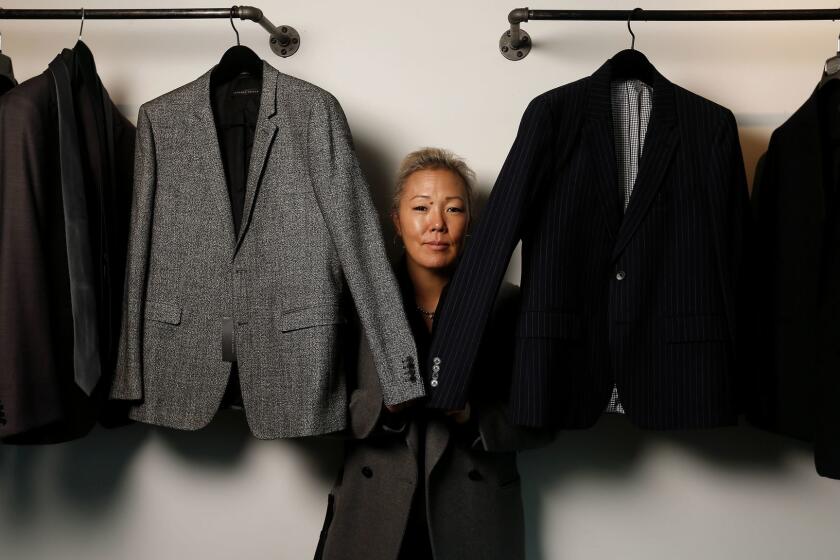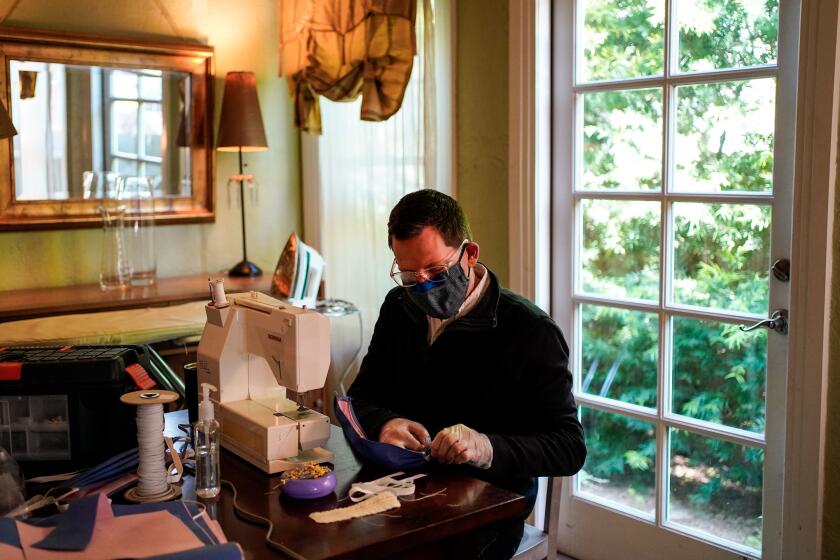‘I haven’t had a job since March 13’: How costume designers are coping with COVID-19
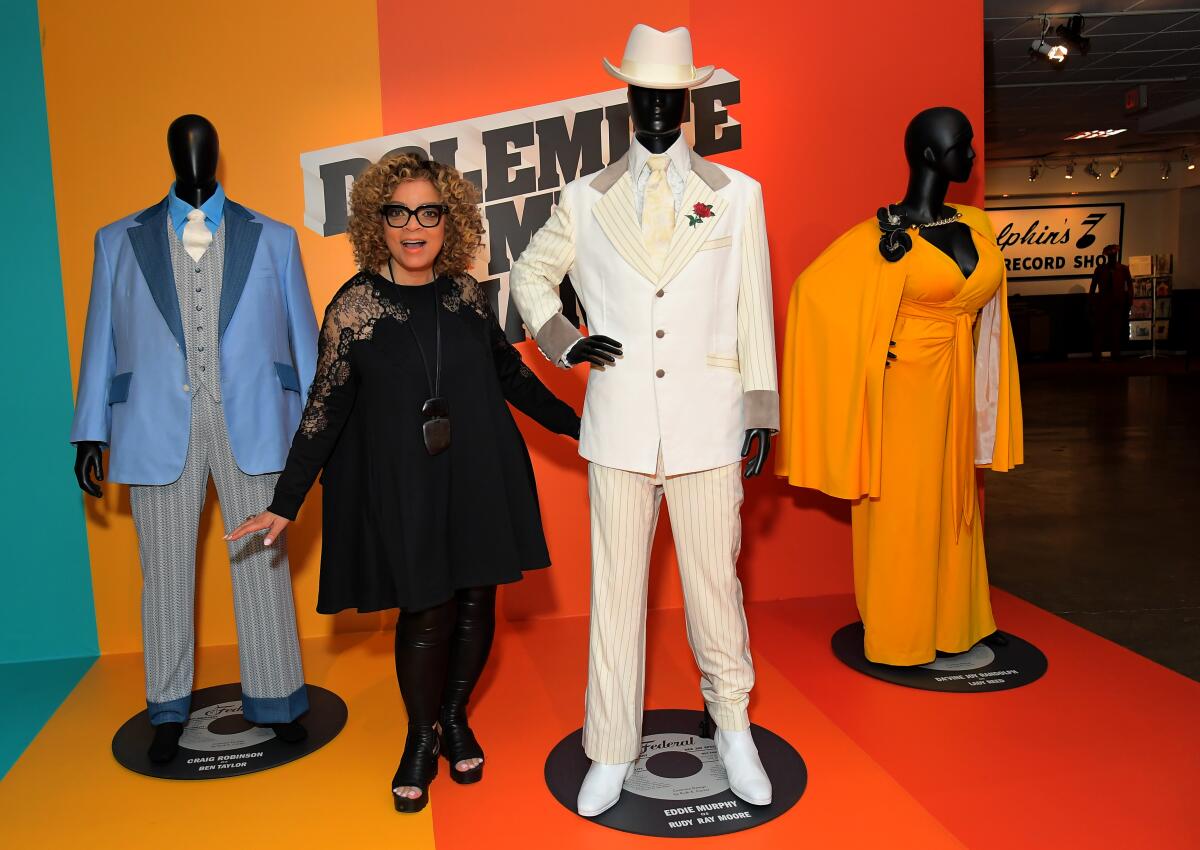
- Share via
It’s about five months into the pandemic, and no one is dressing for the screen. This goes for both the tiny, gridded screen of your WFH videoconference (admit it, you’re still wearing sweatpants), as well as the TV and movie screens filled by Hollywood, where production abruptly halted in mid-March as part of California’s effort to flatten the coronavirus curve.
One big difference, of course, is that while your on-screen wardrobe is totally your call, what appears on those other screens is the responsibility of a Hollywood costume designer earning a paycheck in the process. Since shut-down production means shut-down paychecks (unlike actors, directors and writers, costume designers don’t get residuals), the first half of 2020 found some of the most high-profile costume designers in the business — Emmy and Oscar winners among them — unexpectedly out of work.
Millions of Americans have lost their job due to COVID-19. Whether you’re looking into a new career or making your new financial reality work for you, we’ve got tips.
We checked in with a handful of Hollywood heavyweights to see how they’re faring, what they’ve been doing since the Hollywood dream machine ground to a halt and what they see on the horizon.Janie Bryant
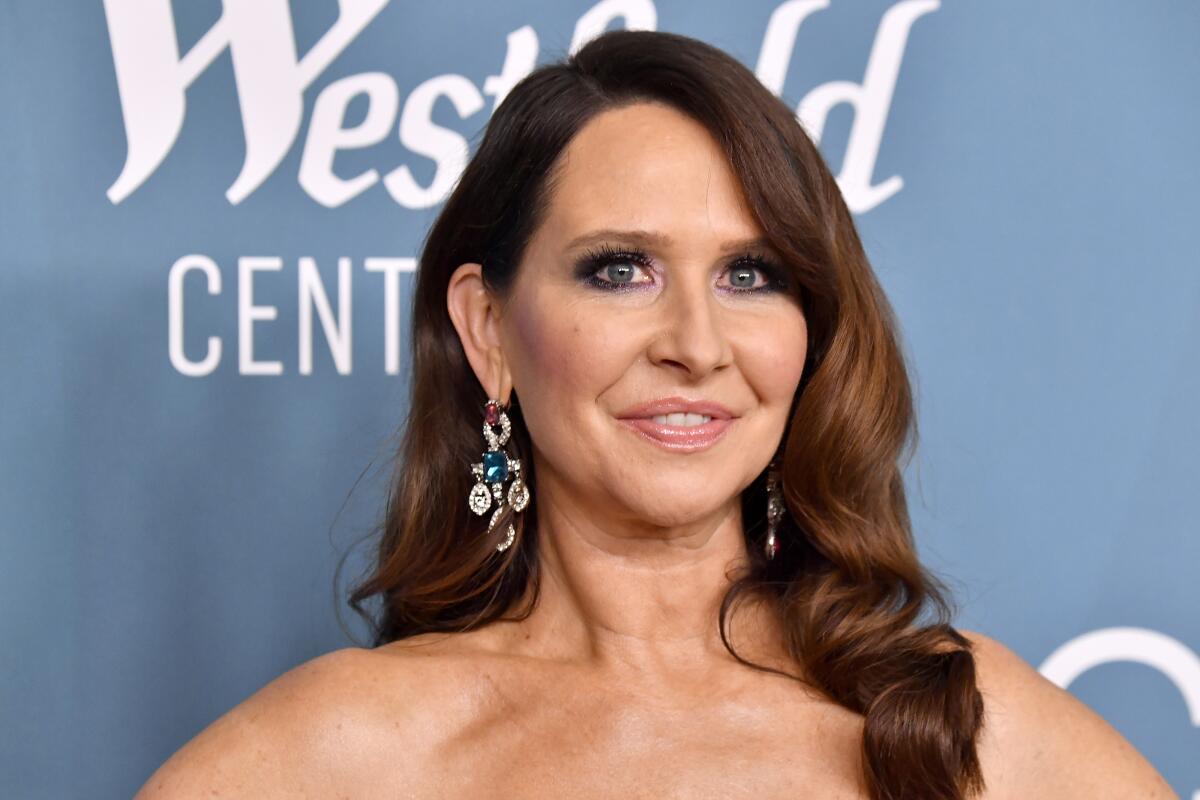
Known for her work on the “Mad Men” and “Deadwood” TV series (the latter of which earned her an Emmy for costume design), Bryant has recently worked on “The Romanoffs,” “The Last Tycoon” and “Why Women Kill.” We caught up with her mid-July as she was crossing from Tennessee into Arkansas en route to L.A. after a six-week visit with family.
Last gig: Designing costumes for the TV miniseries “The Old Man” starring John Lithgow and Jeff Bridges. “We had been filming since September and finished half the show, and we were getting ready to go to Morocco to film the other half,” Bryant said. “Then in March — I think it was the 13th — the day the safer-at-home ordinance came out — they closed down. So we locked the doors and left everything like it was in a time capsule. We weren’t supposed to wrap until mid-July.”
Enough is enough, says a growing number of creatives from the fashion industry, including designer Kimora Lee Simmons, stylist Jeanne Yang and designer Prabal Gurung.
Next gig: Designing costumes for the second season of “Why Women Kill,” she hopes. “[Production] was supposed to start in mid-July and overlap just a little bit with ‘The Old Man,’ but we’re waiting to get the green light,” Bryant said.
Financial impact: “I’m down 100%. I haven’t done any costume design work since March,” she said.
In between: In addition to the Tennessee road trip, Bryant has used her downtime to focus on two side projects. The first is designing a menswear collection for online custom men’s shop Inherent Clothier with co-founder and Chief Executive Taylor Draper. (It’s in inspiration-board stage right now, Bryant said, and is expected to launch in fall 2021.) The second is something she vaguely describes as something in the “textile-hosiery-sock world.”
“I’m very, very, very excited to be doing this,” Bryant said, “because I’m from a Southern textile family, and this is where my roots are.”
Outlook: “I’ve been thinking about the worst-case scenario; what are other things that I want to do? I feel like this is the time we all kind of have to reinvent ourselves and think of other possibilities,” she said.Ruth E. Carter
A costume designer whose credits include “Do the Right Thing,” “Dolemite Is My Name,” “Malcolm X” and “Amistad,” Carter made Oscar history in 2019 as the first Black person to win a costume design Oscar for her work on “Black Panther.” The third week of July found her sitting in front of her computer in her office in the Miracle Mile neighborhood of L.A.
Last gig: In November 2019 she finished working on “Coming 2 America” (expected to hit theaters in December, it’s a sequel to 1988’s “Coming to America”). In December 2019 she worked with Eddie Murphy for his return to “Saturday Night Live.”
Next gig: Marvel Studios’ “Black Panther 2,” for which Carter said she expects to start prepping in the fall.
She’s dressed Malcolm X, Shaft and the citizens of Wakanda on the big screen. Now, thanks to a collaboration with H&M, Ruth E. Carter can do the same for you.
Financial impact: Having already scheduled between-film downtime to focus on other projects, Carter said she hasn’t had any costume-design work scuttled as a result of the pandemic although she has missed out on lecture-circuit appearances. “I usually do university lectures around the country where I talk about the behind-the-scenes of making costumes for ‘Black Panther’ and other films,” she said. “But all of that has been canceled.”
In between: Not working isn’t the same as not busy, though, and the ambitious slate of side projects Carter has been focusing on this year includes a coffee-table book for Chronicle Books, an updated and expanded touring exhibition of her costumes (set to open at SCAD in Atlanta in January), and a line of “Coming 2 America” film-inspired fan apparel for Target.
Carter also said she’s been busy in her new role as a member of the Academy of Motion Pictures Arts and Sciences’ board of governors, which she was elected to last year. “We are doing a lot for Black Lives Matter,” she said, “and bringing in all kinds of people — international people and people of color — into the academy. So I‘ve actually had the time to really focus on that.”
Outlook: “All of us as freelancers know that there’s going to be a period of time where we’re not working,” Carter said. “That just comes with the territory. And those of us who have just finished [projects] have the luxury of having built-up savings. But for those who are just starting out, this is a difficult time.” She added that for every out-of-work costume designer with promising side projects, there can be dozens of people who are out of work without the same safety net.
“I could have up to 25 people on my staff on average,” she said, “costumers that support [me], seamstresses and tailors that support [my] designs, that build [my] work. They might not have their sights set on being designers so they can [be] moving from project to project. But when all the projects shut down at the same time, they’re left without any resources.”Salvador Perez
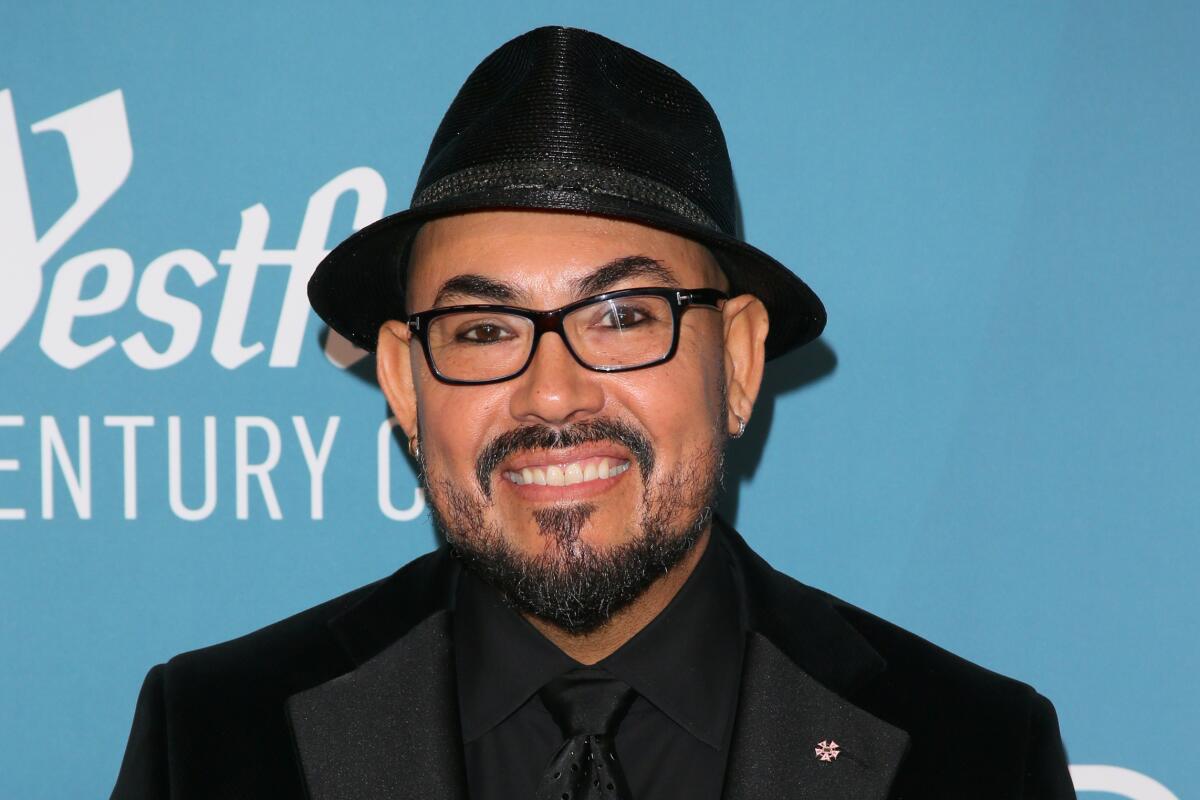
In addition to being a prolific costume designer for film (including “Drumline,” “Think Like a Man” and three “Pitch Perfect” movies) and television (“Veronica Mars,” “The Mindy Project” and, most recently, “Never Have I Ever”), Perez is also the president of the Costume Designers Guild, which represents more than 1,100 costume designers, assistant costume designers and costume illustrators — approximately 90% of which, Perez said, are currently not working.
Last gig: The Disney feature “Vacation Friends,” which was shut down in March. “We had shot two weeks in Puerto Rico and were coming back to Atlanta to shoot the rest of it,” Perez said. “And they shut us down — on Friday the 13th.”
Pop-up drive-ins, pet pigs and quality time with college-bound kids help fill the void.
Next gig: “I’m currently at Mood Fabrics on Pico getting ready to do some commercials with one of my clients,” Perez said in mid-July . “I can’t tell you who because I signed a [nondisclosure agreement], but it’s my first gig since March.”
Financial impact: “I’ve been a union member for 28 years,” Perez said, “and haven’t had a job since March 13.”
In between: In addition to making face masks for friends and working on a fashion collection (longtime friend and collaborator Mindy Kaling frequently wears dresses he’s designed), Perez estimated he’s logged upward of 148 hours on Zoom videoconference calls helping formulate the safety protocols that need to be in place before guild members can return to work.
But I think that anybody who’s new — who doesn’t have an established career — is suffering, whether they’re white, Black or brown.
— Salvador Perez, CDG president
“We’ve written a set of protocols on how we would work,” Perez said. “Now the [International Alliance of Theatrical Stage Employees] and the studios have to agree [on] them. We’re hoping that happens in the next couple of weeks.”
Outlook: Perez said he’s noticed a spate of activity since about the beginning of July. “A lot of people are starting to prep, design and order fabrics,” he said. “We’re just waiting for the protocols so we can actually go into the office.”
Asked if the Hollywood shutdown might be affecting costume designers of color differently, Perez said he didn’t think it was. “As far as being unemployed, all the shows [stopped] so I don’t think it’s affecting one race over the other,” he said. “But I think that anybody who’s new — who doesn’t have an established career — is suffering, whether they’re white, Black or brown.”
Arianne Phillips
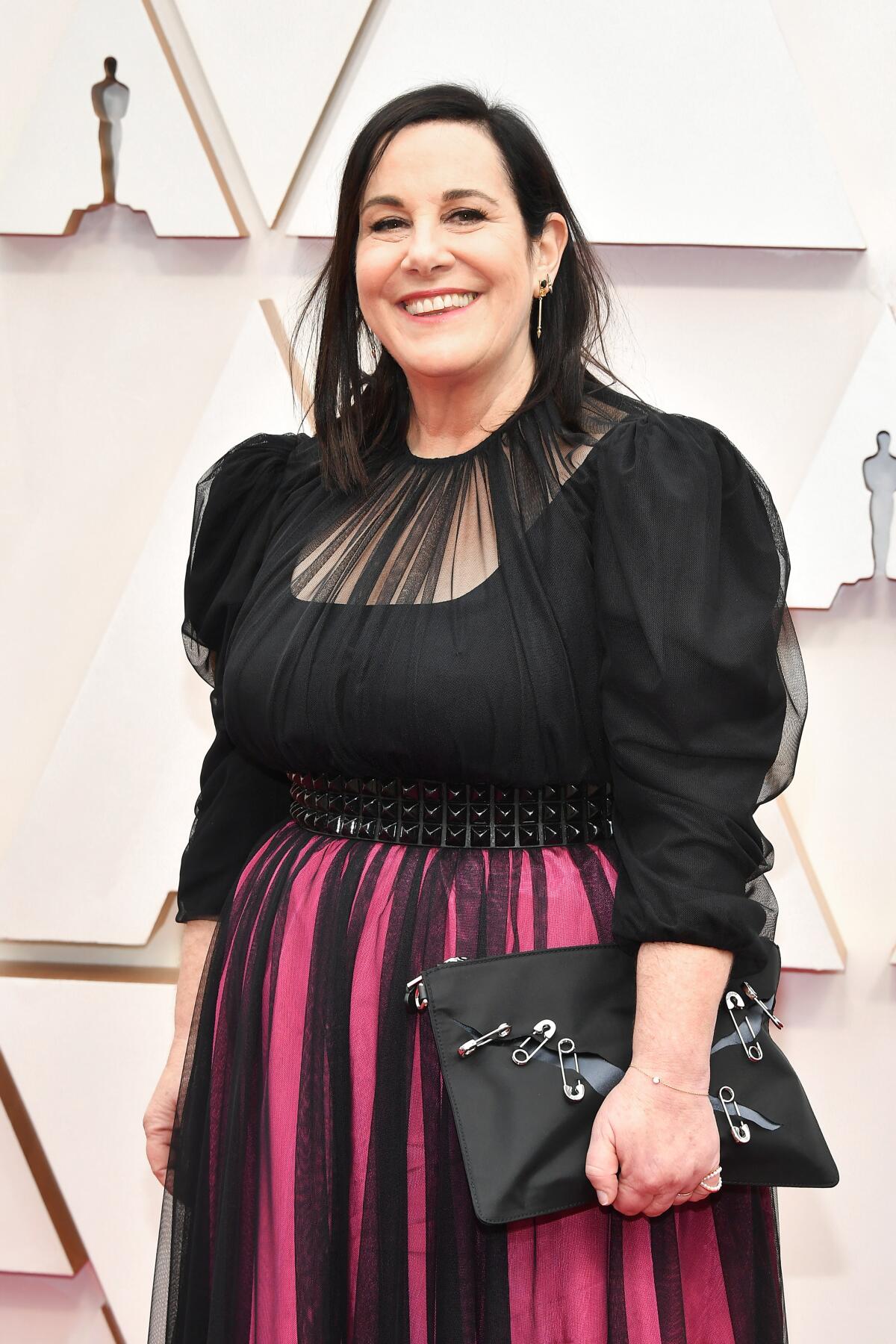
Thrice-nominated for a costume design Oscar — most recently for her work on Quentin Tarantino’s “Once Upon a Time ... in Hollywood” — Phillips is also a stylist (perhaps best known for her work with Madonna that’s included tour costumes, music videos and photo shoots) and fashion designer (men’s suiting collections with Mr Porter, a tie-in with the “Kingsman” films — for which she was also the costume designer).
Last gig: A print advertising campaign for Smashbox cosmetics shot March 12. “I was supposed to start prepping for a film Olivia Wilde is directing called ‘Don’t Worry, Darling’ on March 16,” Phillips said. “But the week before, it got pushed to the second week of April. And by the second week of April there wasn’t even a discussion ... so we’re waiting.”
In mid-March, Phillips also got sick, an illness that dragged on for a month. Although she didn’t get a COVID-19 test at the time, she said an antibody test she took in late April came back positive.
Ruth E. Carter (“Dolemite Is My Name”), Julian Day (“Rocketman”), Arianne Phillips (“Once Upon a Time … in Hollywood”), Sandy Powell (“The Irishman”), Paul Tazewell (“Harriet) and Jany Temime (“Judy”) discuss their work this year recreating great performances, the 1960s and the life of Harriet Tubman.
Next gig: When we caught up with Phillips in mid-July, she was getting ready for an Allure magazine cover shoot the following day — her first job in four months. “I’m really excited about it,” she said, “I can’t tell you who the talent is, but it’s a global superstar.”
Financial impact: As a costume designer, Phillips said her work is down 100%. As a stylist, it’s down 90%. “There’s no work, zero, zip, zilch,” she said, adding that she felt incredibly fortunate to have been able to build up assets during three decades of steady work. “To be honest with you, it’s put me in a very precarious financial position personally that I never would have anticipated. And [it’s] not just me but the people who depend on the employment from the studio in a job that I hire them on. The weight of that, the stress of that, is taxing.”
In between: After wrapping “Once Upon a Time ... in Hollywood” in December 2018, Phillips said she had already planned to take a year off from movie work to focus on a philanthropic project called RAD (short for Red Carpet Advocacy) she launched with co-founder Carineh Martin in January 2019. Phillips said that while the threat of the coronavirus means traditional opportunities for leveraging brand-celebrity-charity synergy — awards shows, movie screenings and the like — temporarily aren’t an option, she’s spent much of her recent in-between time using the RAD platform to connect creatives with charitable causes.
The coronavirus took their day jobs in Hollywood, so costumers turned to making masks to meet a shortage of protective clothing among medical workers.
The result? Phillips said she’s been “busier than ever” during the last four months. She pointed to RAD’s recent campaign with photographer Mark Seliger that, by auctioning off celebrity portraits from his archives, raised more than $250,000 for 19 charities’ COVID-19 relief efforts.
“We’re working on another COVID-related campaign that I can’t officially discuss yet,” Phillips said.
Outlook: “Our whole world has changed,” Phillips said. “Not only with COVID but also with the protests and this kind of civil rights movement we find ourselves in. … It feels inauthentic and tone deaf to be purely promotional. It’s a time when RAD could be of service.”
Get The Wild newsletter.
The essential weekly guide to enjoying the outdoors in Southern California. Insider tips on the best of our beaches, trails, parks, deserts, forests and mountains.
You may occasionally receive promotional content from the Los Angeles Times.
More to Read
Sign up for The Wild
We’ll help you find the best places to hike, bike and run, as well as the perfect silent spots for meditation and yoga.
You may occasionally receive promotional content from the Los Angeles Times.

